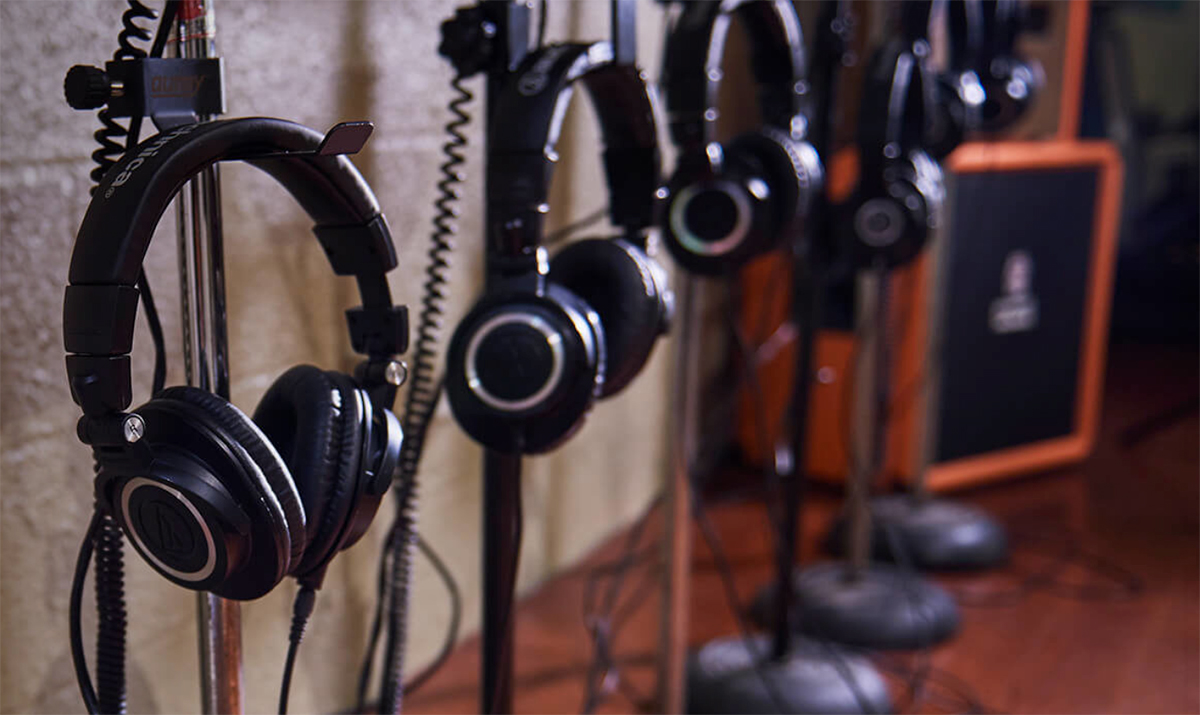Quality headphones are essential to any audio project, but how do you know which pair you need? Here’s what you need to know.
An essential piece of gear when editing any media source is a good pair of headphones. But when it comes to choosing which ones suit your needs, it can be overwhelming due to the sheer volume of headphones available on the market. Here we have narrowed down some of the best mixing and monitoring headphones on the market.
What Is Mixing and Monitoring?
Editing audio requires something known as critical listening. This aims to ensure the audio being worked with is mixed accordingly and overall is well-balanced across the frequencies, and is at a consistent quality across all sound devices. Furthermore, when recording audio, we need to ensure we monitor the incoming signal to ensure accuracy and a neutral sound representation. Having the right headphones for this can make all the difference.
Typically known as studio headphones, their excellent functionality allows a very accurate representation of the original sound recording, without any artificial enhancements. Studio headphones can pick up an extensive range of frequencies, which can help distinguish different instruments or sounds within any field recording, resulting in much more clarity.
Here are a few features to look out for when browsing for studio headphones.
Flat Frequency Response
Frequency response indicates the range of frequencies a component can produce. During the critical listening stages, for the best and most accurate results, no frequencies should be boosted or minimized when coming through headphones. This is called a “flat” frequency response, where there is little to no volume adjustment in the bass, middle, or high frequencies.
In most popular leisure headphones, you’ll find that the bass frequency tends to be enhanced, resulting in a more enjoyable listening experience. We see an example of this in Beats by Dre, a popular pair of headphones that’s well known for bass-boosting qualities. These wouldn’t be suitable for monitoring and mixing as we aren’t getting the true representation of the audio.
Wide Frequency Range
In line with a good flat frequency response, studio headphones will usually have a wide frequency range. The average human ear can pick up frequencies ranging from 20 Hz to 20,000 Hz (20kHz) and studio headphones are designed to reproduce all these frequencies. This can hugely benefit the editing process as being able to pick up a wider frequency range exposes much greater detail, as well as a greater representation of the soundstage, which determines the space and environment of any given sound.
Comfort and Durability
Editing audio can be a long and exhausting process, so it’s expected that you’ll be wearing a set of headphones for a good chunk of the day. Of course, they need to be comfortable! Studio headphones will have ear cups that tend to be softer and bulkier for extra comfort. Some headphones have fully replaceable parts, making them better for longevity.
Open and Closed Back
Studio headphones have two main categories: closed or open back. Closed back headphones will have completely sealed ear cups allowing for greater isolation from external noise. Furthermore, the drivers in the headphones, which turns the electrical signals into sound, are closed off. Open back, on the other hand, are designed so that the drivers sit on the outside, allowing air exposure. The advantage of open back is having a more natural sound that may favor audio editors. But the disadvantage of this is that more external noise will come through, only making open back headphones suitable for much quieter spaces.
So let’s jump into the 7 best studio headphones for mixing and monitoring.
All the prices listed below are RRP (Recommended Retail Price) but most featured in this list are frequently on sale.
Audio Technical ATH-M50x
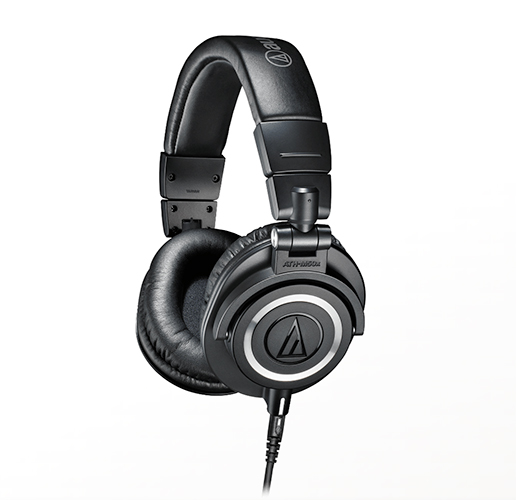
A long-time favorite of the audio editing community opens this list, the Audio Technica ATH-M50x.
A consistent bestseller in the headphone market, these headphones are perfect for a multitude of uses, from monitoring to mixing to casual use. They offer great clarity for a flat frequency response, with a frequency range of 15Hz to 28kHz — it withstands its coherence amongst the entire frequency spectrum.
The build of these headphones is very light, with padded ear cups that provide great sound isolation in noisier environments. Additionally, the ATH-M50x comes with three types of cables, including two straight cables, a coiled cable, and a ¼ inch adapter. The ear cups can swivel up to 90 degrees, allowing for one-ear monitoring as well as a foldable design, a highly beneficial element for those who are always on the move.
The price for the ATH-M50x stands at $169, which is a brilliant price point for their performance. With a comfortable and durable design, these headphones are ideal for those long editing sessions. Headphones will have their downfalls, and in this case, the ATH-M50x is susceptible to sound leaks, which may not be practical for noise-sensitive sessions. Due to the closed-back design, the soundstage is also limited. Besides this, these headphones have excellent balance across the frequencies and are incredibly comfortable — an ideal pair of headphones for the long run.
Quick Specs
- For Pro-Level Tracking/Mixing and DJing
- 45mm Neodymium Dynamic Drivers
- 15 Hz to 28 kHz Frequency Response
- Tuned for Clarity & Deep, Accurate Bass
- Over-Ear, Sound-Isolating Design
- 90° Swivel Earcups, Foldable Design
- Three Detachable Single-Sided Cables
- Pro-Grade Build Boosts Comfort/Strength
- 3.5mm TRS Plug and 1/4″ Screw-On Adapter
Focal Listen Professional
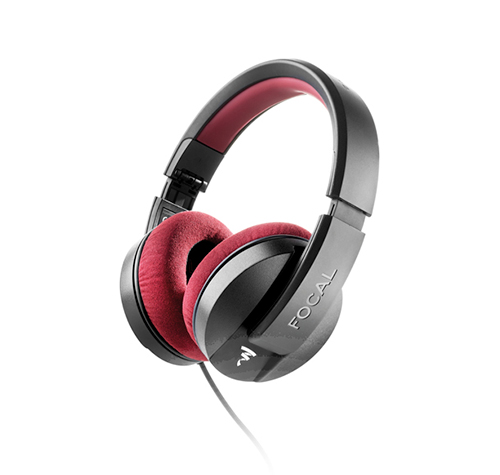
From a brand that isn’t so well known in comparison to its competitors, the Focal Listen Professional studio headphones are a notable pair of headphones within the studio environment. These are certainly a hidden gem that has outstanding qualities in both sound production and build.
The greatness lies within the headphones’ clearcut sound and well-balanced frequencies, with an extended and excitable bass, distinct mids and sparkling highs, and a frequency range from 5Hz to 22kHz — extending far beyond human hearing. The ear cups are super comfortable, with a stand-out red material that’s soft and snug — great for longevity in the studio. If you are frequently on the go, the Focal headphones are foldable and come with a carrying case for protection, an omnidirectional microphone, and a remote control attached to the 1.2 meter cable that works across Windows, Apple, and Android devices, as well as a five-meter coiled cable with a ¼ inch adapter.
While the closed-back design, again, limits the soundstage, it still provides a pleasing listening experience, especially within the bass range. The enhanced driver design is not only light but also ridged for minimal distortion. Furthermore, the foam ear cup design contributes to the enhanced bass range for greater accuracy when monitoring this end of the spectrum.
While the bass is very strong here, there is a slight emphasis in the frequency response within the mid-range that can be a hindrance for those looking for analytical accuracy in your audio editing. The Focal Listen Professional headphones are on the higher end of the market, priced at $299. That being said, their extreme comfort, high-quality sound production, and versatility make them worthwhile.
Quick Specs
- Circumaural Closed-Back Design
- 40mm Drivers
- 22mm Thick Memory Foam Ear Cushions
- Flexible Padded Headband
- 5 Hz to 22 kHz Frequency Response
- Low Impedance, High Sensitivity
- 3.5mm Locking Socket
- 16′ Coiled Cable with 3.5mm Jack
- 4.5′ Cable with In-Line Remote and Mic
Beyerdynamic DT 770 Pro
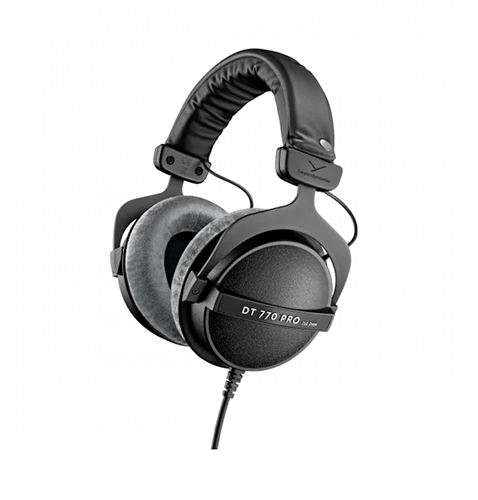
Another popular choice of headphones among the audio editing community are the Beyerdynamic DT 770 Pro. From the superb and comfortable design to the highly professional sound production, these are certainly a top performer.
The main features lie within the staggering 5Hz to 40kHz frequency range with highly detailed sound. As they are specifically designed for those critical listening moments, it provides near to perfect neutral sound, great isolation, and impulse response. With its lightweight diaphragm, it provides high-end transparency. The drivers inside perform great across all devices, making them a suitable all-rounder. Furthermore, the coil inside is lightweight, providing a detailed sound quality that’s balanced without any distortion.
The coiled cord can extend to three meters, with a gold-plated jack as well as a ¼ inch adapter. Lastly, one of its main attractions is the soft ear cups that fit comfortably over the ear (which are also replaceable) with passive cancellation, perfect for distilling external sounds, aided as well by their closed back design.
Unlike some others on this list, the DT 770 Pro aren’t foldable; therefore, they are not as portable-friendly. The ear cups also don’t swivel, which may make one-ear monitoring a challenge. But while these are small downsides, these are intended for studio use, are built to last, and have extremely top-notch performance. With that, the price tag is $259, so a little on the high side, but due to its success over the years, it’s an investment worth making.
Quick Specs
- Circumaural headphones for professional sound in the studio and on mobile devices
- 32, 80 and 250 ohms options available
- Innovative bass reflex system
- High wearing comfort thanks to soft, circumaural and replaceable ear pads
- Comfortable fit due to rugged, adjustable, soft padded headband construction
- Made in Germany
Sony MDR 7506
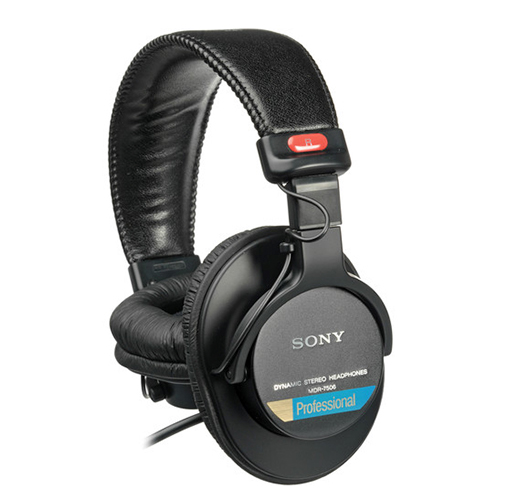
A pair of headphones that have been around for nearly 30 years, the Sony MDR 7506s remain a favorable choice and are highly regarded in the audio industry.
These professional, closed-back studio headphones are designed to provide a combination of practicality, comfort, and strength to produce high-quality sound. They have a neutral-sounding quality, flat across the board with no unnecessary boosting. With a good amount of bass and sharp high-end frequencies, these headphones are great for sound accuracy.
The MDR 7506s come with a coiled cable and replaceable ear cups that can withstand long studio sessions without sudden discomfort. These are also portable-friendly with a foldable design.
The technology inside consists of 40mm drivers to help deliver articulate responses and high fidelity. The frequency range is 10Hz to 20kHz, a little smaller than other top-performing headphones, but it results in a robust low-end, strong mids, and clear highs. Other than the technology within these legendary headphones, one of the main attractions to the Sony MDR 7506s is the budget-friendly price point of only $99.99.
The cons with these headphones, however, lie within their lighter build in comparison to more expensive headphones. They do feel cheap and paired with a coiled cable that is also fused into the ear cup and not detachable, this can feel rather heavy. Besides that, these are a decent purchase for beginner audio editors who are on a budget, as they still perform at a high standard.
Quick Specs
- 40mm Neodymium Drivers
- Closed Design
- Swiveling Earcups
- Single-Sided Cable
- Coiled Cable
- Soft Case
Sennheiser HD560S
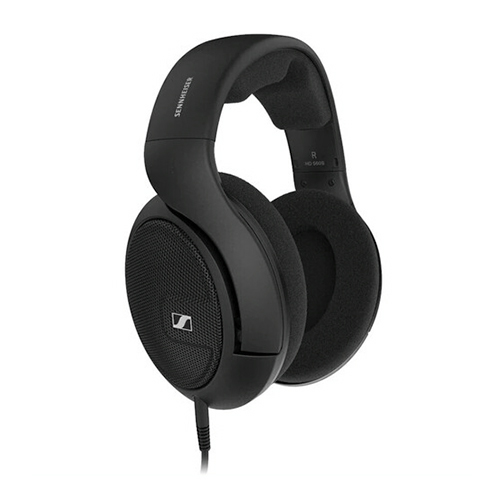
Another open-back pair of headphones, the Sennheiser HD560S are specially crafted for critical analytical listening with a natural sound reproduction.
These are another popular choice among audiophiles due to their linear performance for more accuracy in a vast range of sounds and frequencies. The polymer drivers offer a transparent sound with a frequency range between 6Hz and 38kHz. The HD560S are also specifically designed where the drivers are positioned in such a way that it emulates the optimal triangular position you would find in studio setups which also contributes to a more articulate and wider soundstage.
While they are open back, they can reproduce a deep bass extension that most nearside speakers would struggle with, between the ranges of 20Hz and 50Hz. The improved bass range also limits distortion and overall can provide a fatigue-free listening experience.
Looking at the build of the Sennheiser HD560S, its velour ear cups offer premium comfort for those long studio sessions. They deliver a barely-there feel, and with the open-back design, the ear cups that go around the ear contribute to the natural sound, as well as being well ventilated. The 5.9’ cable is also detachable and includes a ¼ inch adapter for flexible working around different systems.
Like any other open-back headphones, these headphones unfortunately lack in isolation, with sound leakage at a much greater possibility. Other than that, the headphones uphold their reputation of being a perfect match for an audio expert, with their careful and specific designs all to suit those individual needs. The price for these headphones is $229.95, and while at first glance they seem quite pricey, with the reputation they’ve upheld through exceptional sound production and comfort, these are certainly a valuable purchase.
Quick Specs
- Open, Dynamic, Circumaural Design
- Audiophile Sound Reproduction
- 6 Hz to 38 kHz Frequency Response
- Angled Drivers Emulate Speaker Positions
- 120-Ohm Polymer Blend Transducers
- Comfortable Fit with Velour Earcups
- 1/4″ and 3.5mm Connections
- Detachable 5.9′ Cable
- Works with Portable Audio Devices
Beyerdynamic DT 990 Pro
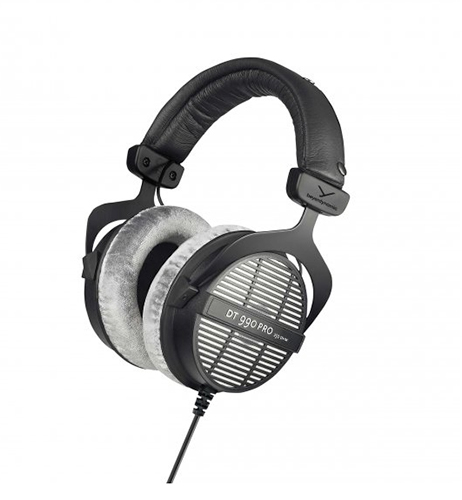
Beyerdynamic headphones are quite the brand when it comes to mixing and monitoring — widely used in the professional industry. In addition to the DT 700 Pro headphones, the DT 990 Pros are also a great choice for analytic listening in audio editing.
These open-back headphones are perfect for mixing and monitoring, offering an impressive open space as well as a wide stereo image and open depth. With a frequency response of 5Hz to 35kHz, the bass frequencies have great precision without overpowering the rest of the frequency range and a powerful treble that isn’t too sharp.
Beyerdynamic is greatly known for its comfortable design, with soft adjustable ear cups for those long studio sessions. Furthermore, all components of the headphones are replaceable if necessary for longer durability. The headphones come with a 3m coiled cable and a ¼ inch adapter.
As mentioned previously with open-back headphones, these are specifically made for studio use, and not for on-the-go purposes due to sound leaks and no isolation of ambient noise. Due to the secureness of the headband fit, it can become quite tight in longer-wearing sessions. However, for the price of $259, these are a great purchase for those starting out in audio editing. Beyerdynamic also have more premium options like the Beyerdynamic DT 1990 Pro Open Back Headphones, but those are an astonishing $300 more expensive!
Quick Specs
- Open, dynamic headphone
- Wide frequency response
- 3-dimensional sound
- Rugged headband construction with replaceable headband pad
- Soft earpads with viscose
- Single-sided coiled cable with gold-vaporized stereo jack plug
- Easy servicing — all parts replaceable
Sennheiser HD650
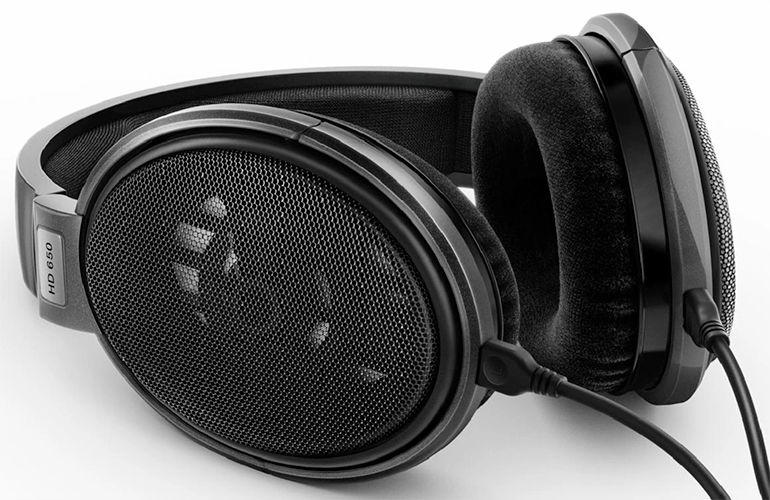
The most premium headphones on this list, the Sennheiser HD650s deliver reference-class audio for a true, open, and natural sound. These headphones stand out from the rest of those listed here due to the finest technology and luxurious build. The Sennheiser HD650 are a brilliant choice for a true audiophile.
The HD 650s are premium in every way, with full range, lightweight, 42mm transducers that deliver a frequency response of 12Hz to 41kHz. The carefully designed ear cups allow sound waves enough room to shine as they would naturally, in addition to the comfort they offer. The dynamic transducers have a 38mm diaphragm with an aluminum voice coil that enhances the possibilities for those critical listening sessions, resulting in effortless treble frequencies, precise bass frequencies, and a natural-sounding mid-range that sits comfortably without being overshadowed by the extreme ranges.
The build quality is an outshining feature, with velour pads for extra comfort without it feeling heavy on the head. They also come with a detachable, impedance-matched cable with a 3m ¼ inch connection, perfect across many studio devices. Additionally, it has a ¼ inch jack adapter. Sennheiser has also designed these headphones so that the parts are all replaceable, allowing for better longevity.
The cons to these headphones are that the treble does lack punch in comparison to the other frequency bands. It’s not awful, but considering the price, the treble frequencies sound slightly darker. Open back, again, is prone to leakage, so using them for casual listening outside the studio will result in poorer sound isolation (in addition to the absence of rotating ear cups). This could be a disadvantage to some. As mentioned, the premium nature is reflected by the price of $549, the most expensive pair on this list. If you have the budget to spend and need some headphones that will guarantee you well-balanced, natural, and precise sound, the HD650s are the perfect match.
Quick specs
- Open Back dynamic headphones
- Go-to reference for analytical listening
- Special damping element made from fine acoustic metal mesh
- Extremely tight production tolerances (± 1dB and handpicked components)
- Exclusive 42mm transducers and 38mm diaphragm
- Detachable connecting cable made from highly conductive OFC copper
- Lightweight, timeless design and comfortable velour pads for hours of fatigue-free listening
- Impendance: 300 ohms
- Frequency response: 12Hz – 41kHz
Cover image via Audio-Technica.
Looking for filmmaking tips and tricks? Check out our YouTube channel for tutorials like this . . .
